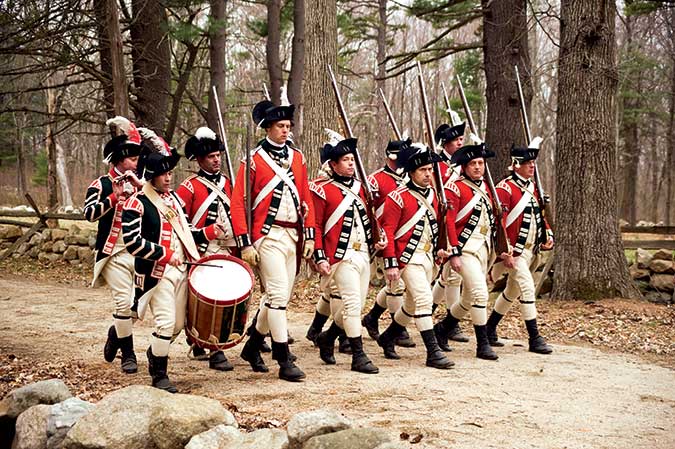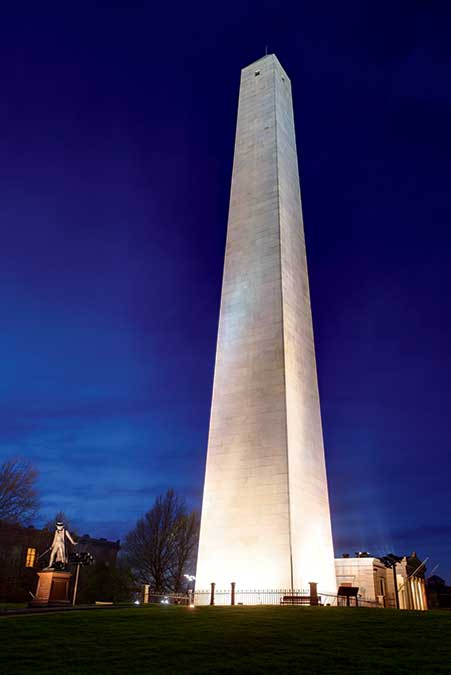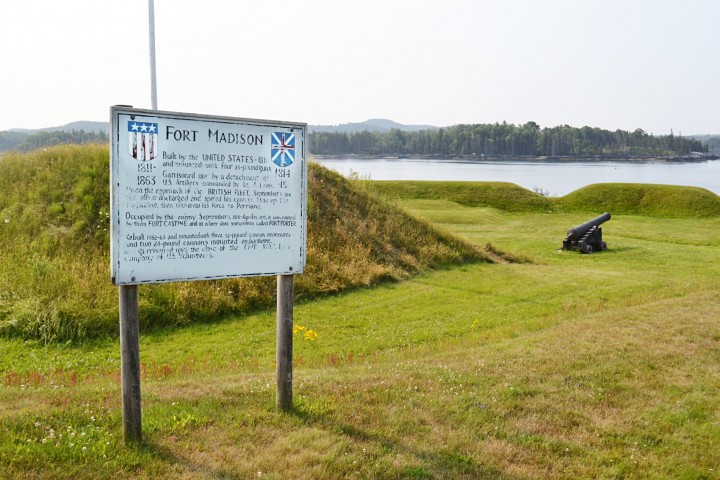Magazine
Best 5 Revolutionary War Sites in New England
Norman Desmarais, the author of The Guide to the American Revolutionary War series, picks the 5 best revolutionary war sites in New England.

Coffee By Design | Portland, Maine
Photo Credit : Katherine Keenan
Photo Credit : Istockphoto
Best 5 Revolutionary War Sites in New England
Minute Man National Historical Park
Minute Man National Historical Park encompasses land in Concord, Lincoln, and Lexington, Massachusetts, and commemorates the opening battles of the Revolution in 1775. The majority of the park is a narrow strip of land on either side of Battle Road, with the Minute Man Visitor Center, just off I-95 in Lexington, at one end and the North Bridge Visitor Center, outside Concord, at the other. Among other events, the bridge is the site of a 21-gun musket and cannon salute each year at 6:00 a.m. on the anniversary of the battles, April 19. And on Patriots’ Day (observed in Massachusetts and Maine on the third Monday in April), the Lexington Minutemen reenact the first engagement at dawn on Lexington Battle Green. nps.gov/mima
Photo Credit : Istockphoto
Freedom Trail
The Freedom Trail is a self-guided walking trail (about 2½ miles) that connects many Revolutionary War sites in Boston. It begins at the Common and ends at Bunker Hill Monument in Charlestown (above). Along the way, visit Faneuil Hall (the scene of many protest meetings against Parliamentary acts); the Old South Meeting House (where the Boston Tea Party began); the Old State House (site of the Boston Massacre); the Old North Church; Paul Revere’s house; and the U.S.S. Constitution, among other stops. The route is marked with red bricks or a painted red line along the walkway. Guided tours are also available. thefreedomtrail.orgFort Griswold State Park
Fort Griswold in Groton, Connecticut, is the site of the last of the war’s New England battles (1781). Benedict Arnold, by that time fighting for the British, burned New London and captured Fort Griswold as a diversion to keep George Washington from marching south to Yorktown, Virginia. ct.gov/deep/fortgriswold
Photo Credit : Aimee Seavey








The first full-length book on the history of Fort Halifax was published on April 1st of this year. Fort Halifax: Winslow’s Historic Outpost by Colby College professor Daniel Tortora is available from The History Press of Charleston, South Carolina and from Amazon.com.
These are all wonderful sites but how can you leave out the Hubbardton battlefield in Vermont? This is one of the best-preserved Revolutionary War battlefields in the country.
I haven’t read this gentleman’s book, but I hope it contains the Battle of Chelsea Creek, which occurred in May of 1775, between the Concord-Lexington fights in April and the Battle of Bunker Hill in June. It was in some eyes the first naval defeat for the British in that they lost a 6-gun armed schooner, HMS Diane, to colonial rebels under the command of Johnny Stark.
Halfway between the Freedom Trail in Boston and the Lexington Green is the Jason Russell House on Massachusetts Avenue in Arlington … it brings home what living through the British March on Lexinton and subsequent retreat must have been like for women and the elderly that fateful day.
The Jason Russel house in Menotomy, MA, (Arlington, MA) is a great take. They still have bullet holes.
For the best history of the prelude to April 19th and the consequences thereafter, I cannot recommend more highly the book, “Paul Revere’s Ride” by David Hackett Fischer. The title sounds like a cliché but it is not. Excellently written with maps and all the events leading up the faithful day..